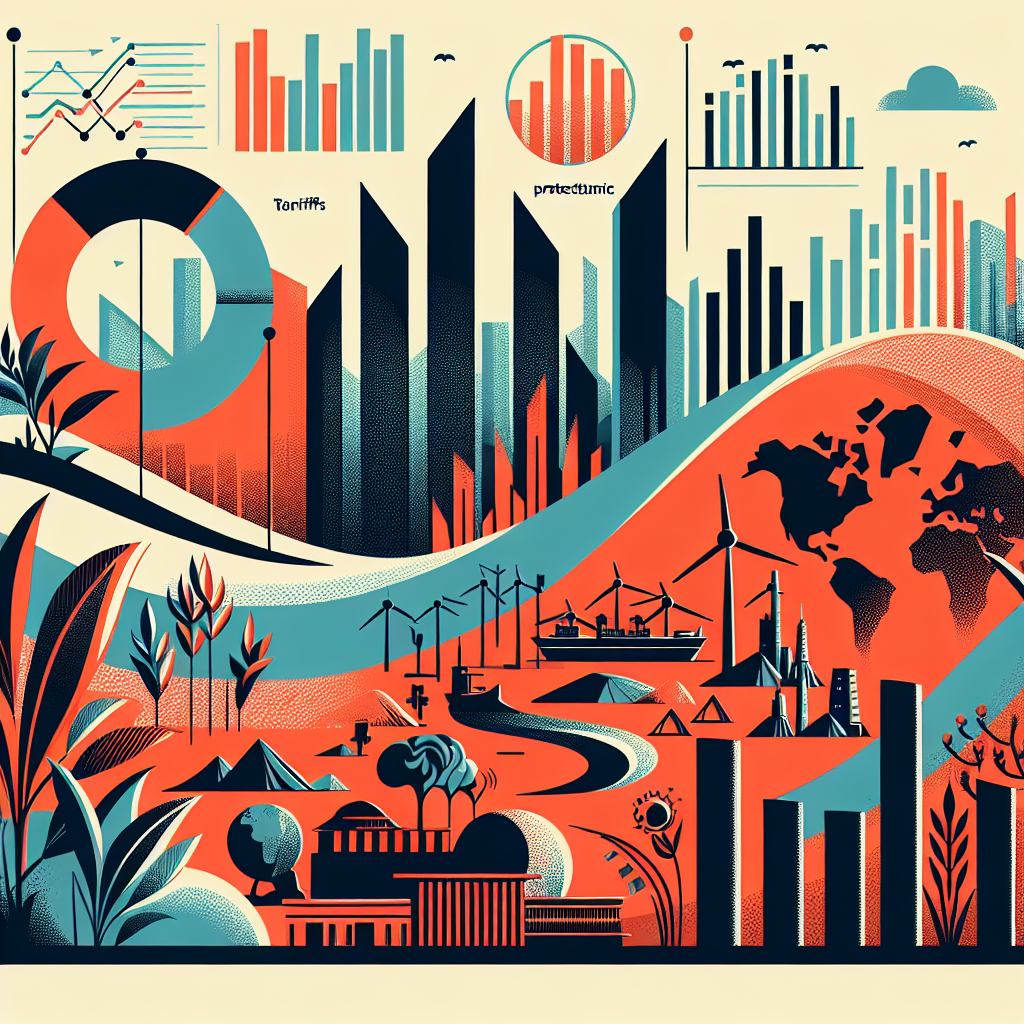Lessons from the Smoot-Hawley Act of 1930

As we enter 2025, President Trump's renewed embrace of tariffs has once again sparked fears of economic turmoil. His administration's latest tariff measures—imposing duties as high as 25% on imports from China, Canada, Mexico, and the European Union—have already rattled markets and economists alike. With recession warnings growing louder, it is crucial to recall historical lessons from America's past experience with protectionism, particularly the infamous Smoot-Hawley Tariff Act of 1930.
The Smoot-Hawley Tariff Act of 1930 is often cited as one of the most damaging trade policies in American history. Signed into law by President Herbert Hoover during the early stages of the Great Depression, this act dramatically raised tariffs on over 20,000 imported goods. Initially intended to protect American industries and farmers, it instead triggered retaliatory tariffs from trading partners worldwide. The result was catastrophic: U.S. exports plunged by more than 60%, global trade shrank by approximately two-thirds, and unemployment soared to unprecedented levels. While historians debate whether Smoot-Hawley directly caused the Great Depression, economists broadly agree it significantly worsened the crisis by shrinking global trade and harming export-dependent industries. Countries such as Canada retaliated by imposing tariffs on U.S. goods, further depressing U.S. exports and deepening economic distress.
Fast forward nearly a century later, and President Trump appears determined to repeat history's mistakes. His recent tariff announcements have already triggered sharp declines in stock markets. Economists are increasingly sounding alarms about an imminent recession, attributing rising risks primarily to these aggressive tariff policies. Goldman Sachs recently increased their estimate of recession probability from 15% to 20%, while Moody's Analytics placed it even higher at 35%. The immediate consequences are clear: Trump's tariffs will significantly raise prices for American consumers and businesses. According to recent analyses, the average tariff rate on all imports could rise from a baseline level of 2.5% in 2024 to an alarming 13.8%—the highest since 1939. This translates into an estimated annual loss of approximately $109 billion for the U.S. economy alone. These rising costs will disproportionately affect everyday American families through higher prices for basic goods and services. For example, new tariffs on Canada and Mexico alone could lead to an annual economic loss exceeding $109 billion. Moreover, retaliatory tariffs from trading partners such as China—already targeting key U.S. agricultural exports—will further compound these losses and threaten employment in vulnerable sectors.
Economists widely agree that Trump's aggressive tariff strategy could trigger a recession in the United States in 2025. The recent stock market plunge following announcements of new tariffs underscores investor anxiety about slowing growth prospects due to escalating trade tensions. Consumer confidence has also sharply declined amid worries about higher costs for everyday goods and uncertainty for businesses planning investments and hiring decisions. While Trump argues that these tariffs represent a necessary "transition" period toward economic strength and self-sufficiency, economists warn that history offers critical lessons against such optimism. The Smoot-Hawley experience vividly demonstrates how escalating trade barriers can backfire dramatically—causing severe economic contraction rather than prosperity.
Economists Arnaud Costinot and Andrés Rodríguez-Clare have highlighted that while trade benefits large economies like the U.S., these benefits are relatively modest overall. Their influential research shows that only about eight cents out of every dollar spent by Americans goes toward imported goods. Blocking all imports would indeed make America poorer—but perhaps not drastically so. However, this does not mean tariffs are harmless. Even small disruptions can trigger outsized negative effects through retaliatory measures and lost business confidence. Trump's current policies risk repeating the mistakes of Smoot-Hawley by provoking retaliation from major trading partners—potentially causing substantial declines in exports, employment losses in manufacturing sectors, and reduced overall economic growth.
The historical parallels between Trump's tariff strategy today and the Smoot-Hawley Tariff Act nearly a century ago are striking—and alarming. While Trump insists his policies will ultimately benefit America economically, evidence from both history and contemporary economic analyses strongly suggests otherwise. By raising prices for consumers, disrupting supply chains, provoking retaliation from trading partners, and creating market uncertainty, Trump's tariffs risk tipping the U.S. economy into recession in 2025—a scenario he himself has refused to rule out. As we learned painfully during the Great Depression era, protectionist trade wars rarely end well. As we navigate this uncertain economic landscape in 2025, policymakers would be wise to heed history's warnings: protectionism may promise short-term gains but often delivers long-term pain.